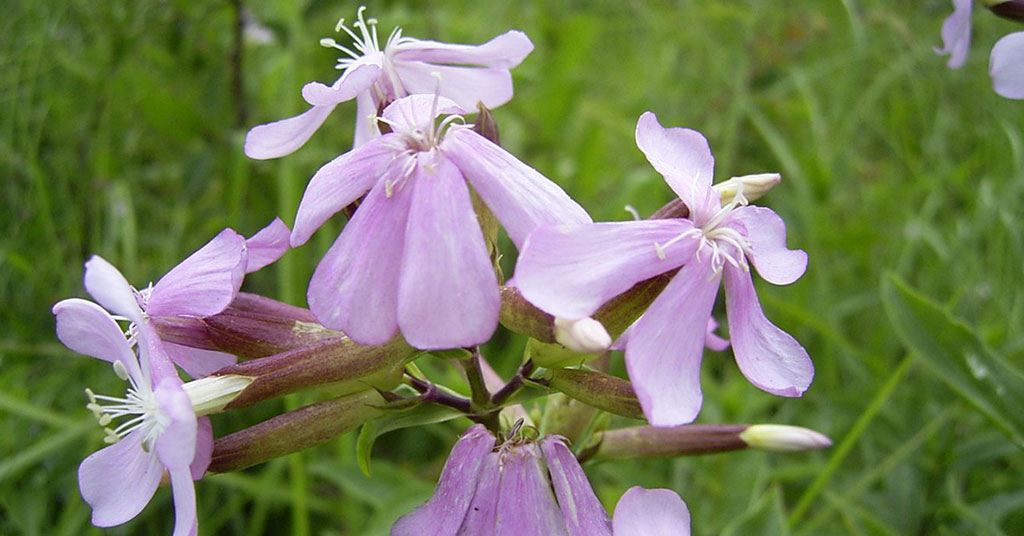Soapwort is a perennial herb that finds a place in most herb gardens. It has been long used to make soap and detergents. Beyond its practical use, the plant also has ornamental values. It’s also a great flower to plant to attract hummingbirds.
What is Soapwort?
Soapwart is a hardy perennial that grows erect with leafy green stems devoid of side branches. It readily flowers through the summer months with clusters of blooms that give a floral and sweet scent that closely resembles a clove. It is native to both Europe and Asia.
- Latin Name: Saponaria officinalis, belonging to the Caryophyllaceae family, also the pink or carnation family.
- Other Name: Common soapwort, crow soap, bouncing-bet, soapweed, wild sweet William.
- Native to: Europe to Western Siberia
- Invasiveness: Possibly. Propagates fast in rich soil under ideal conditions.
- Tenderness: Perennial
- Sun: Sun and part shade
- Water: Prefers consistent moisture
- Soil: Neutral to alkaline soil.
- Hardiness Zone: 4-11
- When to plant: Perennial growing. But ideal to start indoors in late winter with young transplants set out after the last frost of spring.
- Spacing: 12 inches
- Plant height: 6-9 inches
- Bloom period: Late spring to early summer.
- Time to maturity: 3 years
- Container friendly: Yes
- Fertilizer: 12-12-12 NPK ratio.
- Toxicity: Yes
- Drought tolerant: tolerates poor rocky, or sandy soil. Its tolerance increases with age.
- Deer resistant: Yes
- Pest resistant: Yes
How To Grow Soapwort
Growing soapwort is easy and makes an ideal addition to empty beds, rock gardens, and woodland edges. The seeds can be started indoors in late winter. The transplants should be set out in the garden after the last frost in spring. They can also be sown directly in spring in the garden. Germination takes place in around 3 weeks.
Growing Soapwort In Containers
Soapwort can easily be grown in containers. You need to keep in mind that the plant is perennial and live for over two years, they grow back every year when dormant. They can be kept in a container for years. But the containers should be small and should not engulf the plant. Planting in a container or using barriers around the plants prevents the rhizomes from spreading and becoming invasive.
When To Start Soapwort Seeds
You can start growing Soapwort seeds indoors in late winter with young transplants set out in the garden after the last spring frost. It is most commonly grown from cuttings and divisions, but will also grow from fresh seeds. The seeds germinate at temperatures ranging from 55F to 70F. but the warmer end of its germination temperature range will produce faster, more reliable results.
Soapwort seeds germinate quickly, but the resulting seedlings are slow to put on growth. It is thus advisable to start the seeds indoors around 6 weeks before the final spring frost. This will give sufficient and well-established planting time.
When To Plant Soapwort
You can plant Soapwort seeds indoors in late winter with young transplants set out in the garden after the last spring frost. Otherwise, they can be sown directly in the garden in spring. Germination can take around 3 weeks.
In warmer areas where frost is rare, you should plant the seeds outdoors anytime from late spring until two months before the first autumn frost. However, germinating indoors is more reliable than outdoors because it is easier to control the conditions.
Sow in autumn or late winter in a cold frame. The seeds usually germinate within 4 weeks. pick out the seedlings into individual pots when they are large enough to handle and plant them out early in the summer. You can carry out division in spring or autumn. You can actually divide them at any time in the growing season as long as the plants remain moist and re-established. Plant out larger divisions directly into permanent positions.
It is best to pot up the small divisions and then grow them in a lightly shaded position in a cold frame. They can be planted out once they are established in the summer.
How To Collect Soapwort Seeds
It is easier to grow soapwort from stem cutting or by division than from seeds because it takes longer for the latter to germinate. However, even then success is very far from being certain. Seeds are best, provided they get a brief cold stratification.
Wildlife Attracted By Soapwort
The soapwort plant’s nectar is an attraction for bumble bees, sphinx moths, owlet moths, and hoverflies. Butterfly varieties usually attracted to the flower include the Checkered White (Pontia protodice) and the Variegated Fritillary (Euptoieta Claudia). The seeds appear to be of little use by birds as a food source due to the presence of saponins which can also be toxic to mammalian herbivores.













